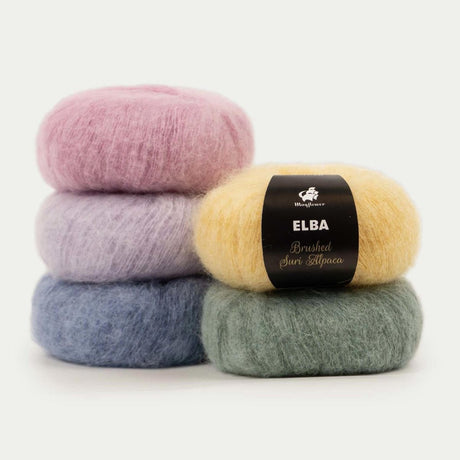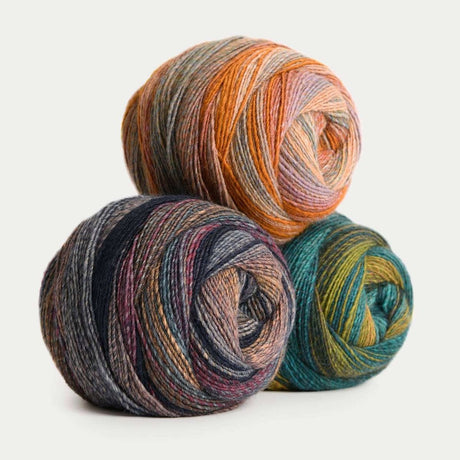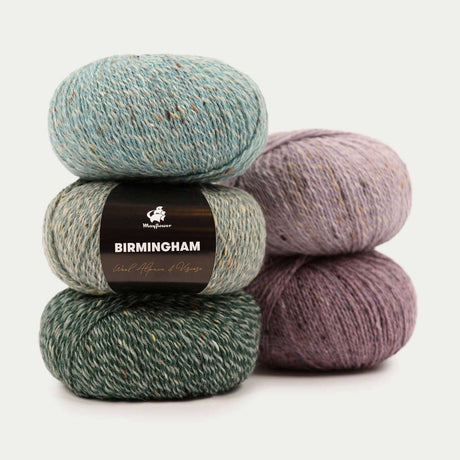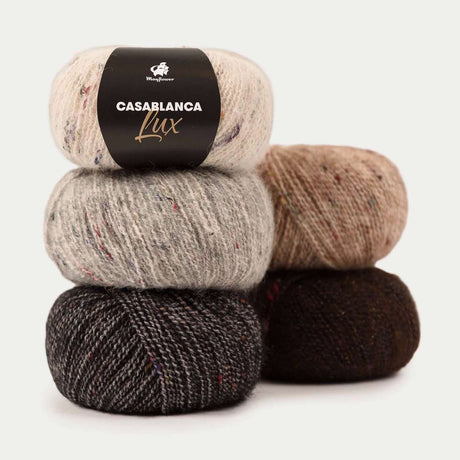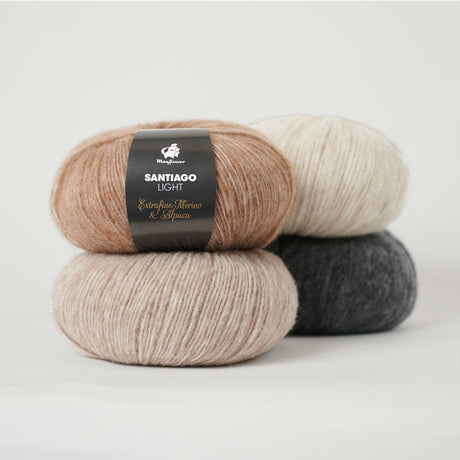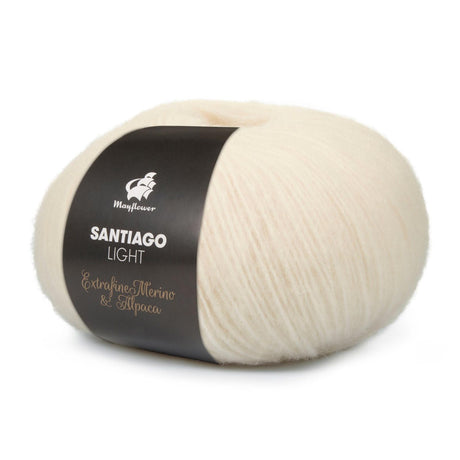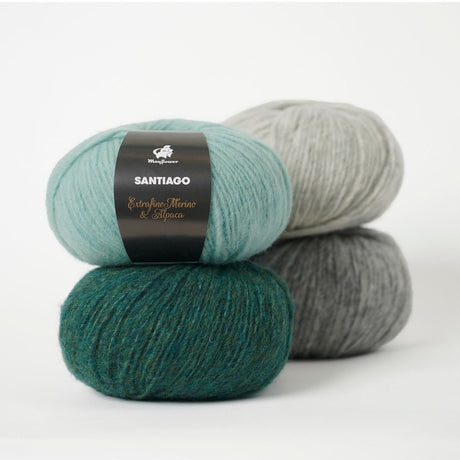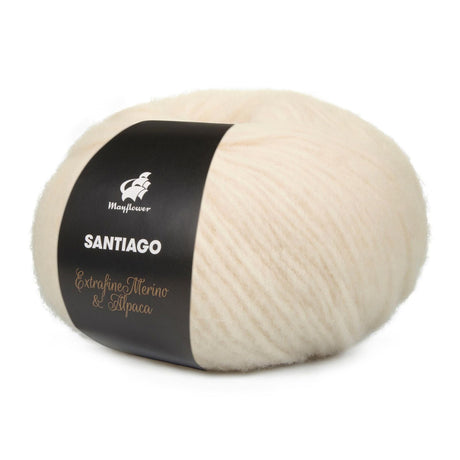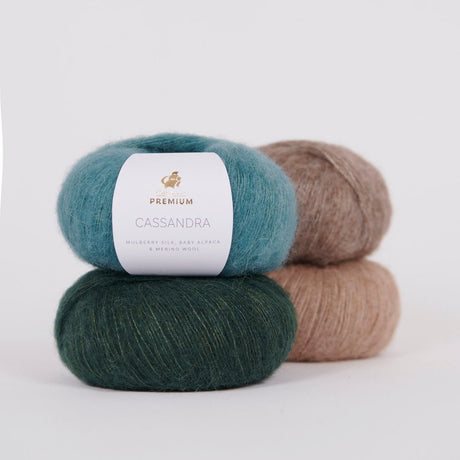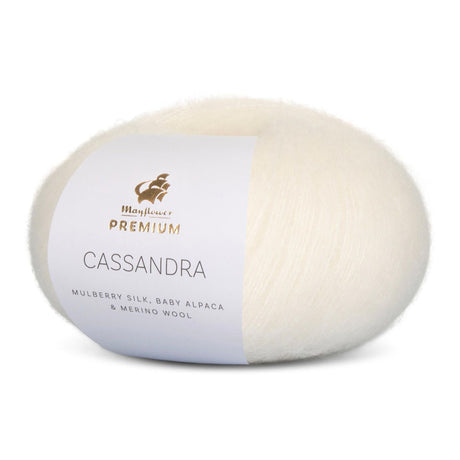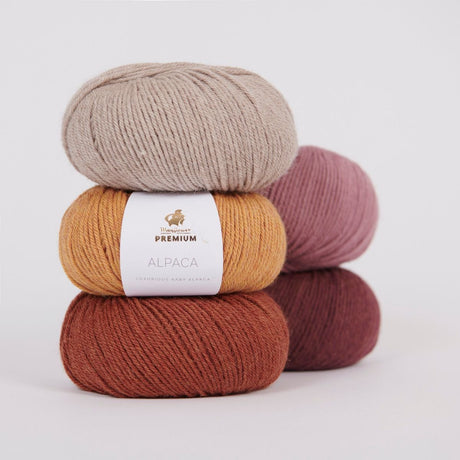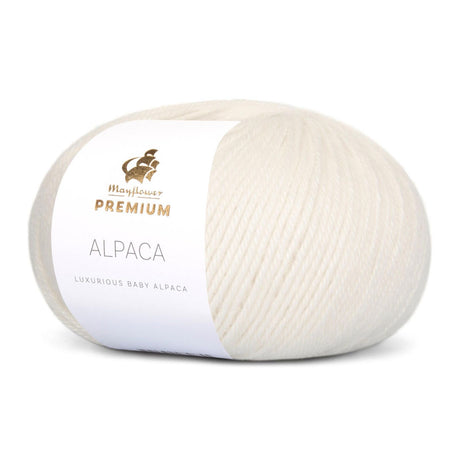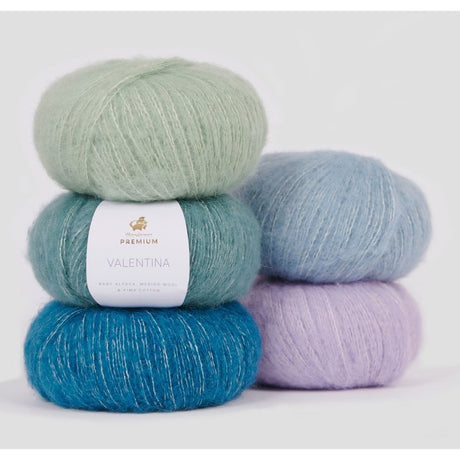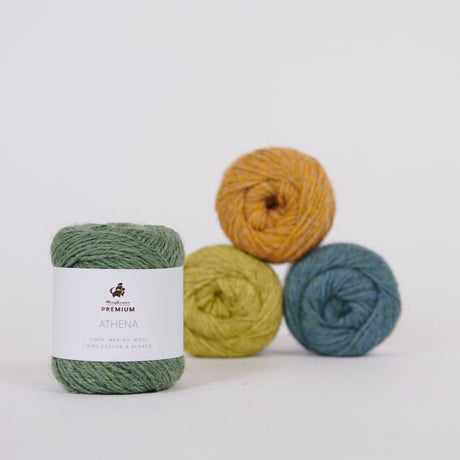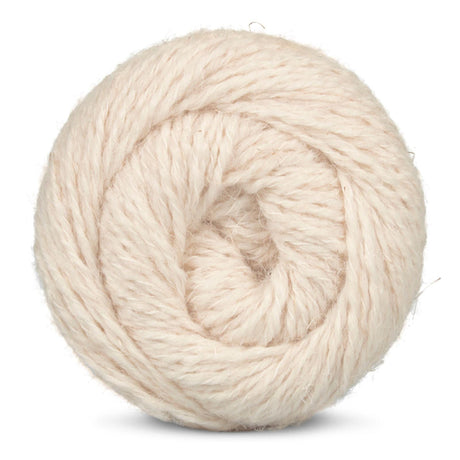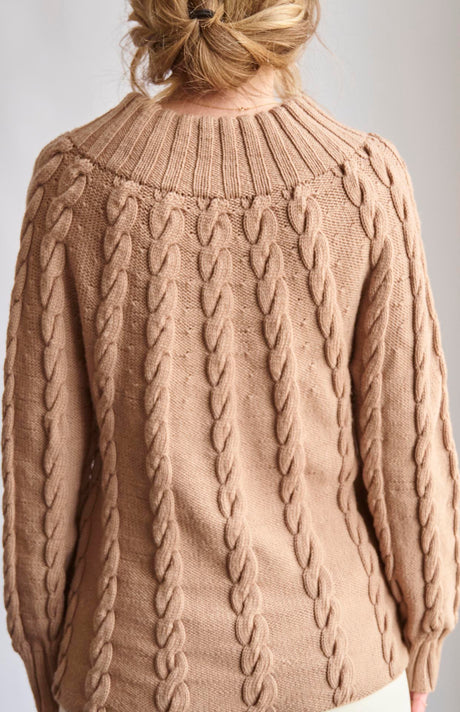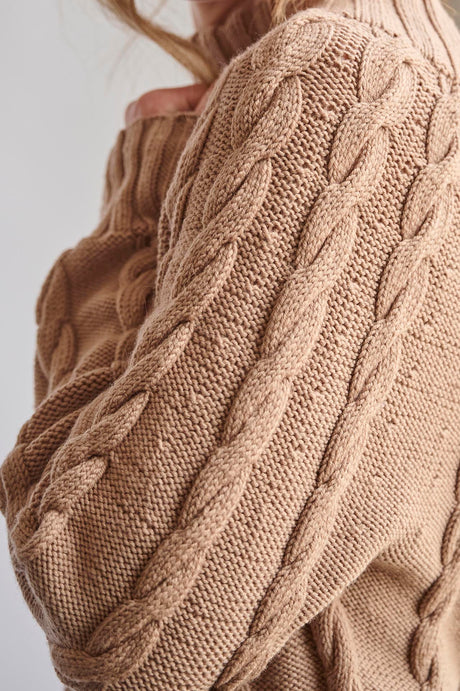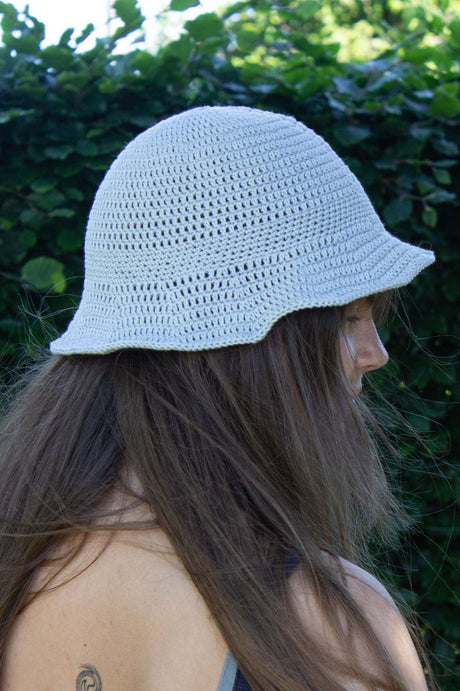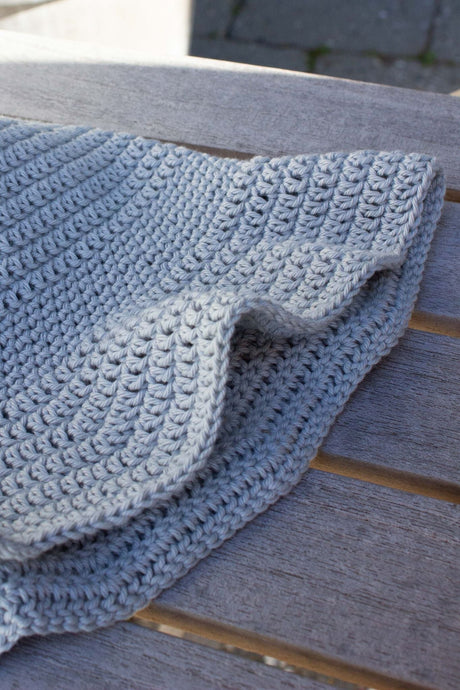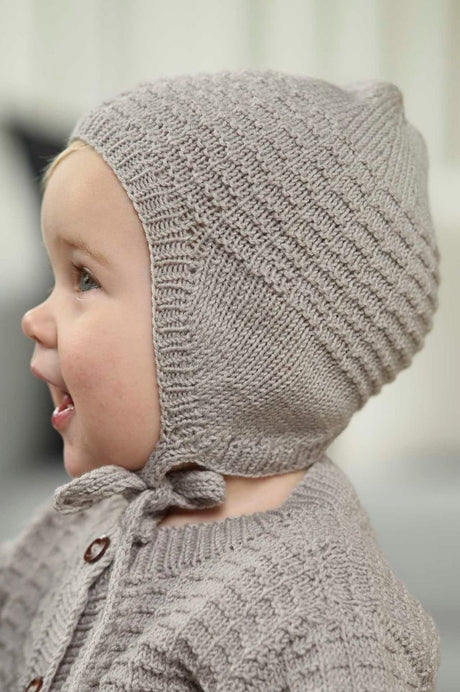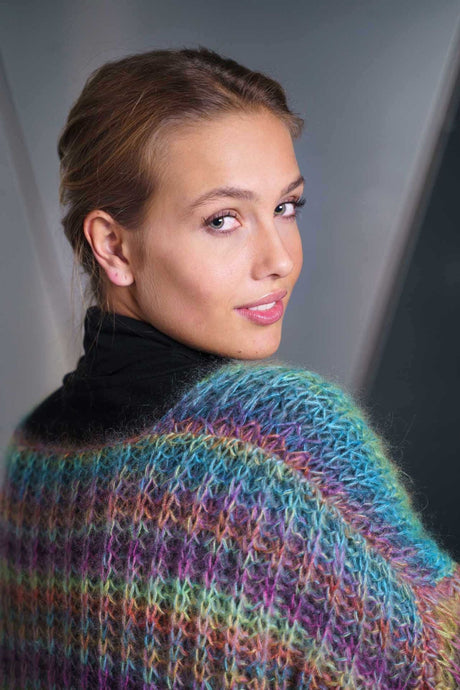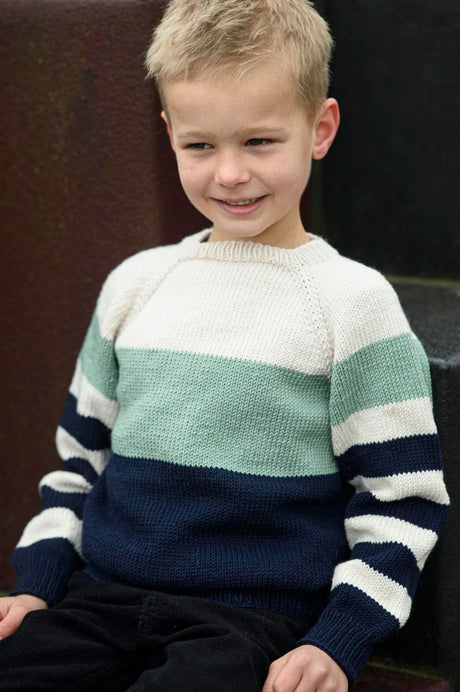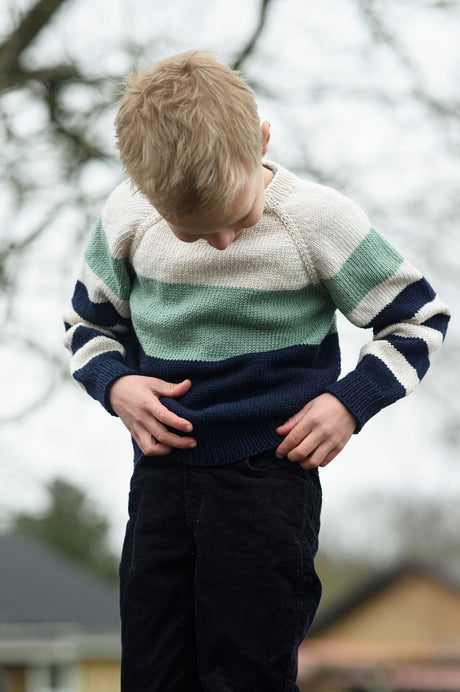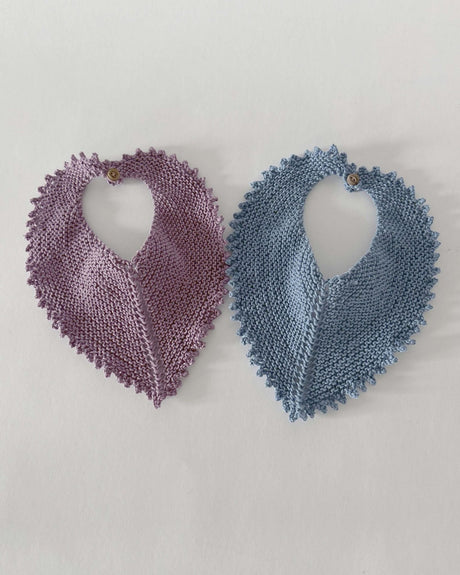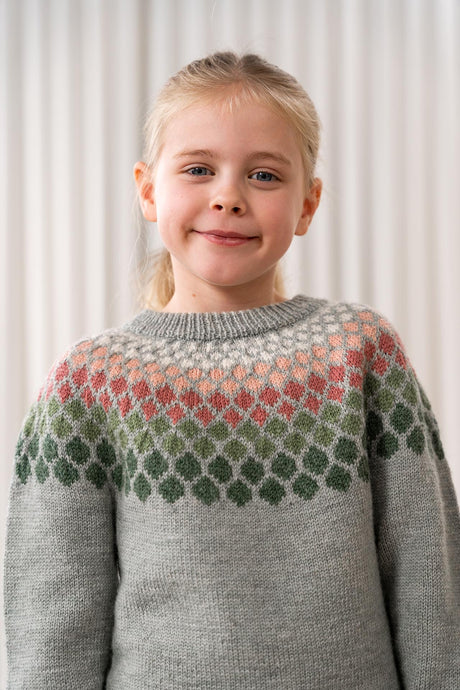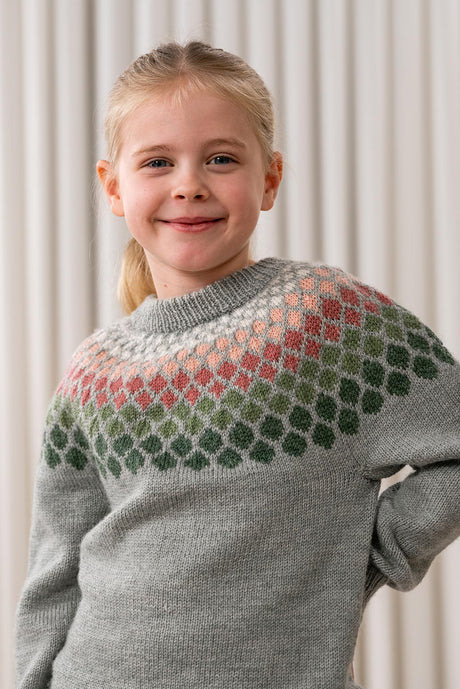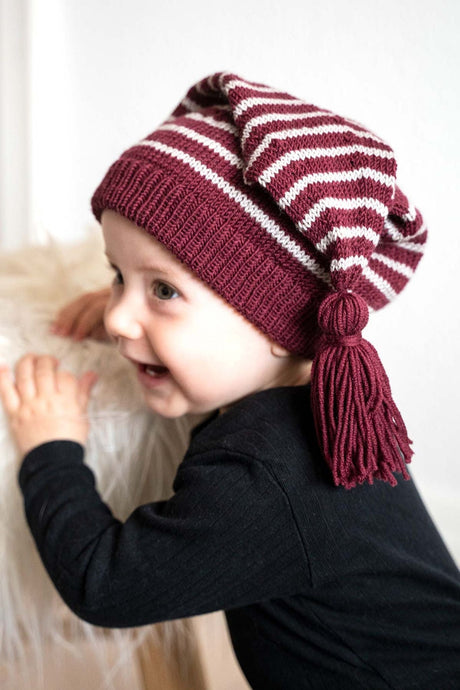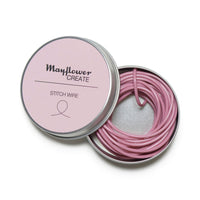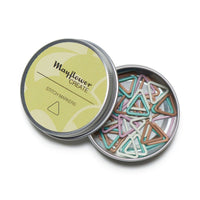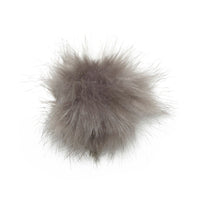What is alpaca yarn?
Alpaca yarn is spun with the wool from alpacas. The alpaca belongs to the species of lamas, which includes the alpaca, the vicuña, the guanako and the lama. Here, the vicuña and the guanako are wild animals, while the alpaca and lama are livestock that are bred from the wildlife.
By nature, alpacas can have up to 22 different colors, but today, you can get alpaca yarn in all the colors of the rainbow, because alpaca wool is also suitable for dyeing.
The alpaca is especially known for having incredibly fine wool with hair fibers that can grow up to 50 centimeters long. In addition, alpaca wool is about five times warmer than sheep wool, as the alpaca wool has hollow fibers that make them even better at insulating.
Alpaca yarn is soft, luxurious and durable, making it perfect for warm winter clothing, but like yarns in other organic fibers it is also breathable so the body can get rid of excess heat.
The different types of alpaca wool
There are two different species of alpacas: Suri and Huacaya. Both species have a wonderful wool, but they are not used for the same purposes.
The Suri Alpaca has long and smooth hair that almost gives the illusion of growing in dreadlocks. These hairs do not curl and therefore they are often used for weaving, but you can also easily find yarn with Suri wool. It was also this type of alpaca wool that was reserved for the royals of the Inca era.
In comparison, the Huacaya alpaca has a more curly and fluffy wool. Its appearance is more classic and is similar to what people associate with an alpaca. The curly wool is extra elastic, making it perfect for yarn.
You may also have heard of baby alpaca wool. Contrary to what the name suggests, this type of wool is not cut from a very young alpaca, but is a description of the extraordinarily fine wool from an adult alpaca.
The properties of the alpaca wool
Alpaca wool has countless naturally good properties and it is therefore a very sought after fiber type.
First of all, the alpaca is bred to live in a harsh climate, and therefore it has unbelievably hot and well-insulated wool. As mentioned earlier, alpaca wool is five times warmer than sheep wool, which comes from the harsh origin climate of the alpaca.
Alpaca wool is also incredibly soft, giving it a nice and luxurious feeling. The fine fibers provide a unique softness that you would otherwise only experience at the finest merino wool. Since baby alpaca is even softer, even people with very delicate skin can carry alpaca wool.
Last, but not least, alpaca wool is also hypoallergenic as it does not contain lanolin. Lanolin is a fat found in sheep wool. Usually this is not a bad trait, but some people experience allergic reactions to the fat, which can cause rashes or itching. These people will typically find that even the softest woolen yarn can scratch. For this group, alpaca wool can be a good alternative to sheep wool.
The advantages and disadvantages of using alpaca yarn
All fibers have advantages and disadvantages, and this also applies to alpaca yarn. However, if you know these advantages and disadvantages, it will be significantly easier to use the fibers optimally - whether you want to knit or crochet in pure alpaca yarn or an alpaca mixture.
Benefits of alpaca yarn
- Very comfortable
- Wonderfully soft
- Does not contain lanolin
- Organic and breathable
Disadvantages of alpaca yarn
- Should usually be hand-washed
Washing and maintenance of alpaca fibers
Alpaca wool should not normally be machine washed as it damages the fine fibers. It is also stated on the banderoles on our alpaca yarn, so always remember to follow these instructions when washing clothes with alpaca wool.
Fortunately, it is not difficult to wash clothes. We have created a general guide below. If there is information on the banderole that differs from the guide, then you must always follow the instructions of the banderole.
How to wash alpaca yarn:
- Put the clothes in a tub of warm water and a mild wool soap.
- Once the clothes have soaked, you can gently clean the soap out of the clothes with clean water.
- Squeeze excess water out of the clothes, but do not twist it as twisting can pull the clothes out of shape.
- Place the clothes flat on a towel and let it dry. Be aware that the clothes are in the right shape and otherwise it must be pulled easily in the desired shape.
It may seem incomprehensible to have to wash clothes if you are not used to it, but the process is actually both easy and fast.
In addition, you should also be aware that woolen clothing should not be washed near as often as other clothing. Clothes fabricated from wool generally do not absorb smells, so it will usually be sufficient to vent the clothes after use. Therefore, washing will rarely be needed unless stains come on the clothes.
Good ideas for projects with alpaca yarn
It's easy to fall in love when you feel a skein of yarn with alpaca wool. When the yarn is brought home, however, a question quickly arises, because what do you need to make from the yarn? Which crochet or knitting projects could be exciting to get started with?
Mayflower fortunately, has a wide range of patterns for our alpaca yarn, but there are also some general projects that you can consider as they are obvious for just alpaca wool.
In theory, you can use alpaca wool for most projects, but we still have some recommendations for extra projects that you will find below.
Shawls and scarves:
Alpaca yarn is absolutely perfect for shawls and scarves, as these garments are often worn completely up against the delicate skin at the neck. Here, there is a greater risk that another yarn made up of another fiber may itch, so it may be a good idea to prioritize using the soft alpaca wool.
In particular, we recommend using alpaca wool for shawls and scarves if you already have delicate skin, and therefore the yarn is of course also perfect for children.
Beanies:
This recommendation comes from the same principle as making shawls and scarves in alpaca, because alpaca wool is also perfect for beanies if you want to avoid itching during the winter cold.
A good beanie should preferably be warm, but the risk of it itching also increases if you start sweating. Therefore, we recomment you using alpaca wool as it is breathable and therefore provides good comfort, just as you will also enjoy the ultra-soft fibers.
When it comes to crocheted and knitted beanies, it is also a huge advantage that alpaca wool insulates so easily. This way, you do not have to make thick and clumsy beanies to keep warm, but you can settle for a thin beanie that can even be under a bike helmet.
Sweaters and cardigans:
Words is, there is nothing better than a wool sweater on a cold day, but you will definetly change your mind if you have tried a sweater that is knitted or crocheted using alpaca wool.
As an added bonus, you will also find that an alpaca sweater can be both thinner and more airy, giving a greater sense of freedom. Wave goodbye to the heavy, classic sweaters, because the alpaca wool gives you completely new opportunities!
3 tips to knit with alpaca yarn
Alpaca wool is thus suitable for both large and warm sweaters, scarves, gloves, beanies and much more. Thanks to the excellent properties of the yarn when it comes to insulation, alpaca is particularly suitable for winter clothing.
With a few skeins of yarn in your hands, which are spun on alpaca wool, you have a lot of options for making some attractive garments. In fact, it is only your imagination that set boundaries. Below are 3 great tips for your next knitting project with alpaca yarn.
- Pay attention to the knitting gauge: Alpaca yarn often has a slightly different structure and thickness than traditional yarn. It is important to check the knitting gauge on the pattern and always start by making a test swatch so you can adjust the size of your knitting needle to achieve the required gauge. This way you avoid getting knitting results that are either too loose or too tight.
- Mix alpaca yarn with other yarn fibers: To achieve different textures and properties in your knit, you can experiment with combining alpaca yarn with other types of yarn. For example, you can add a thread of silk yarn to give a bit of shine to your knitting work, or you can mix it with wool to increase durability and structural stability. The combination with other yarns opens up endless opportunities to create unique and interesting texture effects in your projects.
3. Block your knitting work: Alpaca yarn tends to have some elasticity and when it is completed, it may need a good block to give the work the desired shape and structure. After gently washing your knitting work according to the instructions, you can gently stretch it in shape and fasten it with needles on a foam mat to make sure it keeps its shape properly while it dries.

 10% EXTRAUp to 20% off
10% EXTRAUp to 20% off
 10% EXTRA200 grams - 700 metersUp to 19% off
10% EXTRA200 grams - 700 metersUp to 19% off
 10% EXTRAUp to 17% off
10% EXTRAUp to 17% off
 10% EXTRAUp to 17% off
10% EXTRAUp to 17% off
 10% EXTRAUp to 17% off
10% EXTRAUp to 17% off
 10% EXTRAUp to 22% off
10% EXTRAUp to 22% off
 10% EXTRAUp to 22% off
10% EXTRAUp to 22% off
 10% EXTRAUp to 19% off
10% EXTRAUp to 19% off
